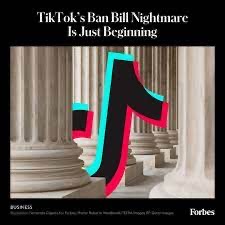El Dorado was a mythical city said to be rich with gold, first reported in Europe in the 16th and 17th centuries. The rumoured location of El Dorado is disputed in different sources, but most commonly said to have been in South America.
Many explorers and those seeking gold or fortune searched for El Dorado. However, according to the journal The Historian El Dorado was in fact a combination of several myths, rather than one fixed location.
In some accounts El Dorado is a man, in others a lake or a valley. By 1835, the myth of El Dorado was already three centuries old, according to the BBC, but its origin and whether a real city of gold existed is still disputed.
Origins of El Dorado
One of the most famous El Dorado origin stories was first mentioned when Juan de Castellanos, a conquistador-turned-priest, included it as part of his verse history of Spanish heroism in the Americas, “Elegías de varones ilustres de Indias“, likely written in the 1570s.
According to the World History Encyclopedia, the story relates to the chief of a Muisca tribe who inhabited a large plateau – the conquistadors knew it as Cundinamarca — high in the eastern range of the Andes in what is now Colombia.
The story tells that, once a year, the chief would cover himself from head to foot in turpentine and gold dust: This is from where the name “el dorado”, which translates as “the golden one” derives.
Lake Guatavita was drained in search of gold. (Image credit: Getty Images)
According to Castellanos, the chief took a barge out into the middle of Lake Guatavita, a small almost circular crater lake sunk in the mountain. The chief’s people looked on, voices raised in song, as he made an offering of gold and emeralds to the lake. Then he dived in — the signal for a festival to begin.
There is no record of anyone having seen this ritual. It was said to have been discontinued some 40 or 50 years before the Spanish arrived. Even as recounted here it was already a memorial practice when the Spanish first encountered it.
Alternative origin story
The second version of the El Dorado origin story dates to 1541, around 20 years after Cortez conquered the Aztecs and eight years after the Incan emperor Atahualpa had been murdered by Francisco Pizarro. At this point in history, the Spanish hadn’t yet ventured into very much of the continent, meaning much of the territory was as yet unexplored by Europeans.
Francisco Pizarro and Emperor Atahualpa surrounded by gold. (Image credit: Getty Images)
The 1541 version of the El Dorado myth is found in the writings of a conquistador named Gonzalo Fernández de Oviedo, and it takes place in Quito in northern Ecuador. This territory was at this time newly conquered as part of the Spanish destruction of the Incas.
According to Oviedo, quoted in the book “Mourning El Dorado” (University of Virginia Press, 2019) El Dorado was a “great lord or monarch [who] constantly goes about covered with gold… as fine as ground salt; for it is his opinion that to wear any other adornment is less beautifying… but to powder one’s self with gold is an extraordinary thing, unusual and new and more costly.”
Pizarro’s search for El Dorado
In February 1541 another Spanish conquistador named Gonzales Pizarro gathered a small force of men and set off from Quito, Ecuador, in search of the land of the mythical king El Dorado. In his own accounts of his adventure, Pizarro describes El Dorado as a lake, not a man. A third contemporary source, the chronicler Pedro de Cieza de León, describing the very same expedition, writes of El Dorado as a valley.
Pizarro headed east from Quito with several hundred conquistadors (sources vary between 220 and 340) and 4,000 native servants. They had been kept in chains and shackles — together with horses, llamas, some 2,000 hogs and a similar number of hunting dogs.
Pizarro expected shortly to find civilization, including open land, tilled fields, villages and towns. Instead, marching for weeks and months through the darkness of the rainforest in the rainy season, across mountains, marshes and rivers, he found nothing but – in the words of Cieza de León — hardship, famine and misery.
Pizarro’s men discovered the Amazon river while searching for El Dorado. (Image credit: Getty Images)
Along the way, native people were captured and interrogated by the Spanish. When they didn’t come up with the answers Pizarro wanted, they were tortured. As the end of the year approached, things became desperate. All the hogs were dead.
They came to a great river, most likely the Coca, just south of the equator in what’s now northern Ecuador. There a local tribal chief named Delicola, having heard of the cruelties the Spanish had visited on those they questioned, told them what they wanted to hear, according to the book “River of Darkness” (Bantam 2011).
There were “very great populations further on” downriver, he told them, and “very rich regions full of powerful lords”. Pizarro ordered a boat to be built; it would carry men and supplies downstream while the remaining men and horses made their way along the shore. They proceeded this way for 43 days, but found little food and no people.
In Dec. 1541, one of Pizarro’s men, Francisco de Orellana, volunteered to take the boat and some fifty men, to find food and return. He would “bring back provisions as soon as he could,” he told Pizarro. Orellana did find food, but he did not return.
Instead, he and his men found the Amazon — which they knew as the Marañón – and they rode its length for months, reaching the Atlantic on Aug. 26, 1542, according to the book “Expeditions into the Valley of the Amazons” (Forgotten Books, 2018). Orellana claimed he had no choice but to continue on.
Pizarro called it treason. He turned his remaining men around and made their way slowly back to Quito. They ate their dogs and horses, boiled up their saddles and stirrup leathers and roasted them over ashes. Somehow they made it, staggering into Quito in June.
This El Dorado story demonstrates how the myth became one of the principal drivers for the European exploration of South America north of the equator.
The German conquistadors
Pizarro’s was the first explicit attempt to find El Dorado. But once stories of the golden land spread, more conquistadors began claiming that their journeys of exploration into the interior had been in search of it.
This is demonstrated in the story of Sebastian de Benalcázar, Gonzalo Jiménez de Quesada and Nikolaus Federmann, according to Jose Ignacio Avellaneda’s essay “The Men of Nikolaus Federmann” (“The Americas”, Vol. 43, No. 4, Apr., 1987). The presence of Nikolaus Federmann among the conquistadors in Colombia suggests that, while the overwhelming majority of them were Spanish, the picture is more complicated than is often thought.
This 1635 map show parts of northeastern South America and a route to El Dorado. (Image credit: Willem Blaeu)
The typical party of conquistadors was comprised largely of poor Spanish men from Andalusia, Castile and Extremadura, who had made their way to Seville and then to San Lúcar de Barrameda — where the Guadalquivir flows into the Atlantic, and where most journeys to South America began.
However, this group also included Dutch, Fleming, German, Italian, Albanian, English, Scots, and more. Among these, during some of the 1530s, the Germans were far and away the most prominent.
This was because in 1528 the emperor Charles V owed the Welser banking family of Augsburg 143,000 florins, according to the book “Man’s Worldly Goods” (Hesperides, 2008) . Unable to pay, Charles licensed them the province of Venezuela instead, reserving for himself 20% on treasure found, and likewise on slaves — a state of affairs that continued until 1546.
Federmann’s was only one of several German-led expeditions that criss-crossed the region in this period; other German conquistadors included George Hohermuth and Philip von Hutten.
One of the first, under Ambrosius Ehinger, did gather some 405 pounds (184 kilograms) of gold, mostly through extortion and violence. This cost the lives of almost everyone involved, including Ehinger. When the survivors returned to Coro, the Venezuelan capital, after two years away, they revealed they had buried the treasure under a tree, and they never found it again.
Additional resources
You can read more about El Dorado at the World History Encyclopedia website. Alternatively, you can watch this video by Science Channel.
Bibliography
- Avellaneda, J.I. “The Men of Nikolaus Federmann: Conquerors of the New Kingdom of Granada“. (Cambridge University Press, 1987)
- Bandelier, Adolphe F. “The Gilded Man” (D. Appleton, 1893)
- Burnett, D Graham. “Masters of All They Surveyed: Exploration, Geography and a British El Dorado” (University of Chicago Press, 2000)
- Cochrane, C. “Journal of a Residence and Travels in Colombia“. (AMS Press,1825)
- Humboldt, A. “Personal narrative of Travels to the Equinoctial Regions“. (G. Bell,1847)
- Markham, C. “Expeditions into the Valley of the Amazons“. (Cambridge University Press, 1859)
- Naipaul, V.S. “The Loss of El Dorado” (Vintage, 2001)
- Rivière, Peter (ed). “The Guiana travels of Robert Schomburgk“. (Routledge, 2006)
































